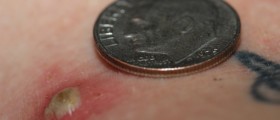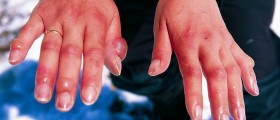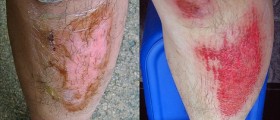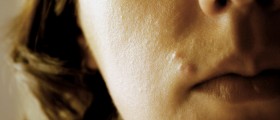
What is a skin graft?
A skin graft is a process which consists of taking the skinfrom another part of the body and applying it to the site where skin ismissing. It is actually a skin transplant which is performed by surgeons anddermatologists and it usually follows removal of a skin cancer or a burn. Skingraft is required when the area that has been cut out is simply too big to sewits edges together directly, so it covers the wounded space and attaches itselfto the cells which are located underneath it. The doctor usually consults thepatient before the procedure and asks the her or him to a sign a consent formwhich indicates that the patients understands the procedure and agrees to it.The patient needs to inform the doctor about all medications taken, along withthe info on any medical conditions or allergies. Herbal remedies taken alsoneed to be noted because they may lead to abnormal bleeding in some cases. Thearea that needs to be excised is commonly marked with a colored pen before thelocal anesthetic is injected into it. The cut is made around and under thelesion, usually using sharp scissors and a scalpel. This procedure is referredto as excision biopsy. Once the lesion area gets removed, bleeding may occurbut it is usually taken care of by coagulating the blood vessels withdiathermy. The skin graft requires the specific areas of skin to be shavedbefore being cut from the body. It is of utmost importance that the skin colorand thickness matches the skin area which is about to be covered with the skingraft. The graft gets applied to the wound before it is secured in place with stitchesand a special non stick dressing gets applies over it then. Most people who areabout to have a skin graft are troubled by the fact that they may have a scar. Unfortunately,the affected area will be scarred to a certain degree. It depends on the typeof skin graft applied and the actual size of the graft. Actually the patientwill have two scars: one on the place from where the graft was taken andanother on the place where it has been applied. In some cases, the skin mayhave an abnormal response to the healing which may lead to hypertrophic orkeloid scarring. Once the process is over, the wounds may be tender for acouple of hours once the effects of the local anesthetic wear off. The graft needs to be taken care of and thestretching and the exertion of the area need to be avoided for quite some timeafter the stitches get removed. There are some cases in which the skin graftdoes not stick to the wound properly and tends to fall off. There are variousreasons which may lead to such complications.
Types of skin graft
There are two main types of skin grafts and those are splitskin grafts and full thickness skin grafts. Split skin grafts taken with adermatome by shaving the epidermis and the dermis of the skin. For those who donot know, dermatome is a large knife. Once the piece of the skin is shaved itthen gets applies to the wound and it is commonly taken from the leg. Full thicknessskin graft is somewhat different from the split skin graft because it involvesthe removal of all the layers of the skin by utilizing a large type of scalpel.This procedure is quite similar to the process of skin excision. The skin needsto be cut in a precisely correct shape before it can be applied to the woundedarea of the skin. This type of graft usually involves taking the skin frombehind the ear, from the neck or the arm.
Skin Grafts for Burn Treatment
Those who have suffered from full thickness or partialthickness burns can be treated with skin grafts. The burned areas of the skinneed to be removed in a surgical manner as early as possible. The process usedis usually debridement of excision. Once the burned skin is removed it can betreated with skin grafting. By doing so the appearance of the burned area alongwith its function gets significantly improved, especially in the cases wherethe feet, hands or the face are affected by burns. Skin grafts are not thefirst priority in cases where the patient’s life in danger.
Skin grafts to improve leg ulcer healing
Skin grafts can also be used in those who suffer from legulcer, during the process of healing. These ulcers are commonly caused by poorblood flow from the legs towards the heart. This type of treatment in suchcases is still largely experimental though.

















Your thoughts on this
Loading...